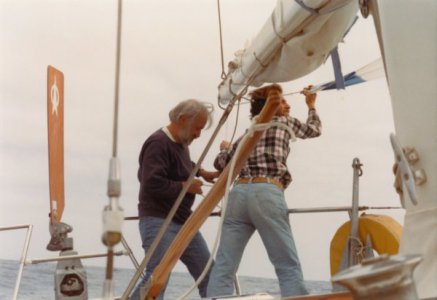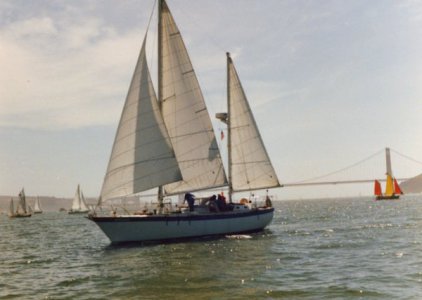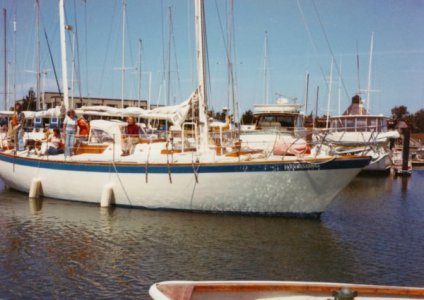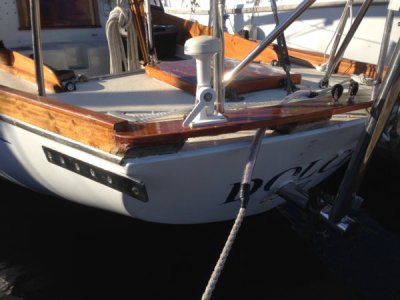
Mark,
Here above is a photo of the Cape Horn, installed on the transom of Dolce, Albert 30. I guess I don't have a photo showing the full unit anymore. Maybe on my old laptop - wherever that is!
Below shot shows the reefing lines and all halyards run into the cockpit. I could set the main, drop it, and reef all from the cockpit. Very efficient and easy. The thin blue line running around the base of the cockpit, just off the bridge deck and seats controls the angle of the windvane, so one can trim the vane even from inside the boat.
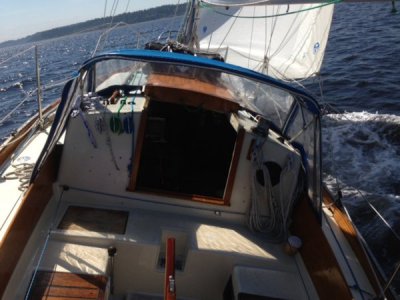
Last photo below shows the vane sticking up over all the deck clutter. Taken on a shakedown cruise up into the San Juans, Washington. Tied up at the dock on Lopez Island.
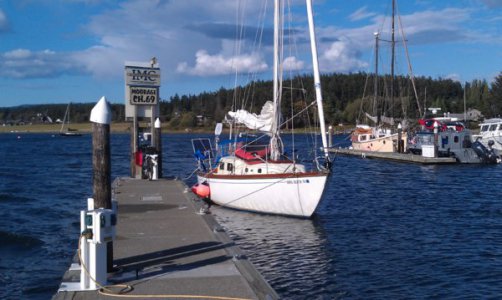
I used my vane all the time, after I installed it. Never touched the tiller ever again, if I could avoid it. I went with the Cape Horn, designed and sold by Yves Gelinas, mostly because the vane was originally designed for the Albert 30- which my boat is. Or was, as I sold it to a young guy a few years ago.
My belief is the Cape Horn is superior to the other vanes on the market. The design allows for light air, dead down wind sailing, and is very, very stable at all points oround the compass. Monitors usually don't work in light air because of significant friction between the gears in the servo pendulum or head. Yves developed a simple articulated shaft arrangement that has no gears, hence to inertia or friction to overcome. Also, there is no stress on the movement, so it is very responsive in light winds, and works equally well at force 7 or 8 and above.
I set up the boat with three reef points in the main, and roller furling, with all,lines led back into the cockpit. So for single handed sailing, I could set up the vane on the tiller and take in as much sail as I needed, without ever leaving the cockpit. Very efficient, and quick. Also installed a removable Solent stay, anchored to the stem head fitting. Used this stay to fly a second Genoa or Jyb wing and wing for downwind sailing. Also it was my go to stay for setting a storm jyb - which is required for most offshore racing events - single handed transpacific etc.
Of course every vane owner thinks theirs is the best. And Most all are right!
Ahh, the good ole days! Great times!!
Glenn



